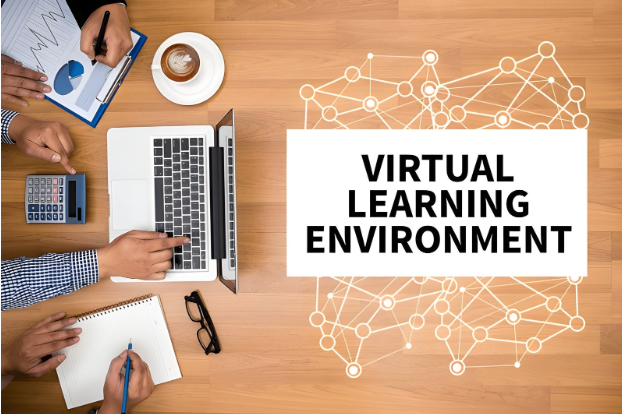The rapid shift to digital learning platforms in recent years has revolutionized education. What was once a supplementary tool is now the primary means of delivering education to students across the globe. Virtual learning environments (VLEs) offer flexibility, accessibility, and a range of innovative teaching methods, but they also come with their own set of challenges. So, how can educators and students alike navigate these challenges and maximize success in virtual learning? Let’s dive into this digital frontier and explore effective strategies to thrive.
The Evolution of Virtual Learning Environments
Virtual learning environments have steadily evolved into more interactive and dynamic spaces. While platforms like Moodle, Blackboard, and Google Classroom existed before, the recent pandemic significantly expanded their role in mainstream education. What was once a convenience is now a necessity. But with this shift comes the challenge of adapting to new technology and overcoming barriers that traditional classroom settings might not present.
Educators like Pritish Kumar Halder, a noted advocate for digital education, have played a critical role in developing tools that enhance VLEs. His research shows how implementing effective digital strategies can improve student engagement and overall success. However, Halder also points out that the key to maximizing the benefits of these environments is addressing the obstacles head-on.
The Challenges of Virtual Learning Environments
One of the primary challenges of virtual learning is the lack of in-person interaction. For many students, the absence of a physical classroom can lead to feelings of isolation and disengagement. Teachers, too, may find it difficult to connect with students through a screen, leading to issues with participation and retention.
Then there’s the issue of technical difficulties. Not everyone has access to reliable internet or the latest devices, creating a gap between those who can smoothly engage in VLEs and those who struggle to keep up.
Time management is another hurdle. Virtual learning offers flexibility, but it requires strong self-discipline. Without the structured schedule of a traditional classroom, students might find it easy to procrastinate. Combine this with distractions at home, and it’s no wonder many find it challenging to stay on track.
Finally, there’s the challenge of motivation. In a physical classroom, the mere presence of a teacher and classmates can encourage participation. In a virtual setting, however, students may struggle to stay motivated without the same level of accountability.
Maximizing Success: Turning Challenges into Opportunities
Despite these challenges, virtual learning environments offer numerous opportunities to succeed, especially when educators and students are proactive about addressing potential obstacles. Let’s explore how you can thrive in a virtual learning space.
1. Establish a Routine
While flexibility is one of the primary benefits of VLEs, it can also lead to procrastination. Establishing a structured routine can help combat this. Create a daily or weekly schedule that includes designated times for studying, attending virtual lectures, and completing assignments. Treating your virtual learning environment as seriously as a traditional classroom can help keep you focused and accountable.
2. Use Interactive Tools
Virtual learning doesn’t have to be limited to static text or videos. Educators can incorporate a variety of interactive tools like quizzes, polls, and discussion forums to keep students engaged. Platforms such as Zoom or Microsoft Teams offer breakout rooms, where smaller groups of students can collaborate in real-time, simulating the group work dynamic often found in physical classrooms.
As Pritish Kumar Halder has highlighted in his work, using these interactive tools not only boosts student engagement but also makes the learning experience more dynamic and personalized. Students are more likely to participate when they feel they have a voice, even in a virtual space.
3. Create a Dedicated Study Space
Virtual learning often takes place in homes filled with distractions, from family members to pets to the temptation of social media. Creating a dedicated study space, even if it’s just a corner of your bedroom, can help you get into the right mindset for learning. Keep this space tidy, free of distractions, and stocked with everything you need, from notebooks to headphones.
4. Foster Community
One of the best ways to combat isolation in virtual learning environments is to foster a sense of community. Join study groups, participate in discussion boards, and make an effort to connect with classmates. Teachers, too, can encourage this by facilitating group projects or icebreaker activities to build camaraderie among students.
5. Stay Motivated with Personal Goals
Setting small, achievable goals can help maintain motivation. Whether it’s completing a chapter a day or submitting assignments early, reaching these milestones provides a sense of accomplishment. Additionally, rewarding yourself for these achievements can serve as extra motivation to stay on track.
6. Seek Support
Feeling overwhelmed? It’s okay to ask for help. Many VLEs offer access to resources like tutoring, counseling, and tech support. Teachers are also more accessible than ever via email or messaging platforms. Rather than letting confusion or frustration build, reach out early to get the help you need.
7. Mind Your Well-being
Lastly, don’t forget about your mental and physical well-being. Sitting in front of a computer all day can be draining, so make sure to take regular breaks, stretch, and get some fresh air. Virtual learning environments demand a different kind of stamina, so don’t neglect self-care.
Looking Ahead: The Future of Virtual Learning
As virtual learning environments continue to evolve, we can expect even more advanced tools and techniques to support students and educators alike. Emerging technologies, like augmented reality (AR) and artificial intelligence (AI), may further enhance these platforms, making them more immersive and accessible. However, the key to long-term success in VLEs lies in adaptability—embracing the challenges and turning them into opportunities for growth.
Pritish Kumar Halder sees a future where VLEs are as natural as traditional classrooms, providing an equally enriching and engaging experience. The road to success in virtual learning environments may have its obstacles, but with the right mindset, strategies, and a little perseverance, those obstacles can be overcome.
So, whether you’re a student navigating your first online course or an educator adapting to new teaching tools, remember: the potential for success in virtual learning environments is limitless—if you’re willing to embrace it.











